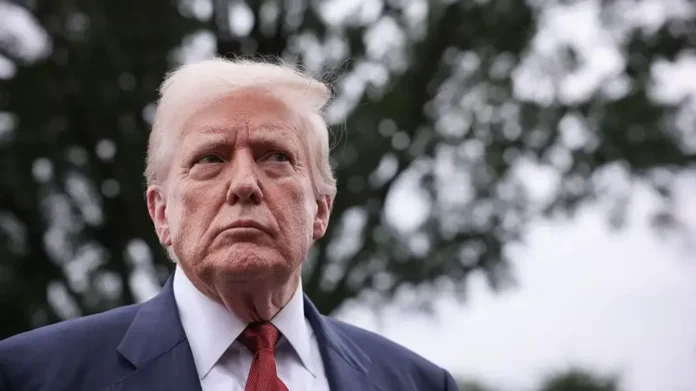US President Donald Trump is threatening to impose sweeping new secondary tariffs aimed at countries still trading with Russia, a move that could have major consequences for the global economy if implemented.
Despite being the most heavily sanctioned nation on Earth, Russia continues to fund its war in Ukraine through vast earnings from oil and gas exports. President Trump is now seeking to cut off that revenue stream.
Unless a ceasefire is agreed by Friday 8 August, Trump has warned that countries buying Russian goods, especially oil and gas, will face a 100% tariff on any products they export to the US.
The proposed tariffs wouldn’t apply directly to Russian goods, but rather target any country that continues to trade with Moscow, a strategy designed to isolate the Kremlin economically by punishing its trading partners.
“I used trade for a lot of things, but it’s great for settling wars,” Trump said last month.
Global Energy Prices Could Rise
Russia remains the world’s third-largest oil producer, behind only Saudi Arabia and the United States. Its biggest energy customers include China, India, and Turkey, all of whom could be heavily affected by the proposed sanctions.
Analysts warn that the most immediate global impact would be on energy prices. If countries are deterred from buying Russian oil, global supply could drop, driving up prices, just as happened after the 2022 invasion.
“The key channel by which secondary tariffs on buyers of Russian energy could impact the global economy would be through the level of energy prices,” said Kieran Tompkins of Capital Economics.
That could trigger renewed inflation spikes, just as the global economy is recovering from previous energy shocks. However, Tompkins notes that this time, OPEC+ countries have spare production capacity, which may soften the blow.
Russia’s Sanctions Evasion Network
Russia has already established a sophisticated system for skirting sanctions, including a “shadow fleet” of tankers with murky ownership structures. These vessels are used to disguise the origin of Russian oil and may help countries like India and China evade the proposed US measures.
“Sanctions maintenance is as big a task as the imposition of sanctions in the first place,” said US sanctions expert Richard Nephew of Columbia University.
Targeting India: iPhones Could Get Pricier
India, now the second-largest buyer of Russian oil, is squarely in Trump’s sights. If secondary tariffs go ahead, goods imported from India, such as electronics, could become dramatically more expensive in the US.
That includes Apple iPhones, many of which are now manufactured in India for export to America. Tariffs could double prices for US consumers, as importers typically pass costs onto buyers.
“They’re fuelling the war machine. And if they’re going to do that, then I’m not going to be happy,” Trump told CNBC on Tuesday.
India has pushed back, calling the threat “unjustified”, and highlighting that the US itself still conducts limited trade with Russia, mainly in nuclear materials and fertilisers.
A High-Stakes Gamble with China
Any attempt to apply secondary tariffs to China, Russia’s largest energy buyer, would carry far more risk. The US imports five times more from China than from India, including consumer staples like clothes, toys, and electronics.
Trade expert Professor Simon Evenett of IMD Business School warned that “over-escalation” could backfire, derailing broader trade talks between the world’s two largest economies.
“It would be very difficult to peel the Chinese away from the Russians without a good reason,” he added, pointing to the deepening strategic partnership between Presidents Xi and Putin.
Previous tariff hikes on China under Trump nearly halted trade altogether, and any repeat could reignite inflation in the US, while damaging Chinese manufacturing at a time when its economy is already facing serious strain.
Europe Also in the Crosshairs
The EU and Turkey also remain significant importers of Russian energy, though much reduced from pre-war levels. Brussels has pledged to end Russian energy imports by 2027, but some contracts are still in place.
Secondary sanctions on EU nations would severely disrupt the US-EU trade relationship, the largest in the world, especially as both sides have only recently agreed a 15% tariff on EU exports to the US.
European exports such as pharmaceuticals and machinery may be difficult for the US to source elsewhere, meaning American businesses and consumers could once again face higher prices.
Strangling Russia’s War Chest
Russia’s economy, surprisingly robust in the face of earlier sanctions, may be more vulnerable now. Growth has slowed sharply, and Economy Minister Maxim Reshetnikov recently warned the country was “on the verge” of a recession.
Oil and gas revenues still fund around a third of the Russian government’s budget, but export volumes are slipping. Meanwhile, defence spending has reached 6.3% of GDP, its highest since the Cold War.
By contrast, Ukraine is spending 26% of its much smaller GDP on defence, relying heavily on support from Western allies.
The Trump administration believes secondary tariffs could choke off the Kremlin’s ability to fund the war, if trading partners like India and China are forced to choose between access to the US market or continued commerce with Russia.
How effective this economic pressure will be remains to be seen. But if implemented, it’s likely to reshape global trade patterns, energy markets, and geopolitical alliances for years to come.
















